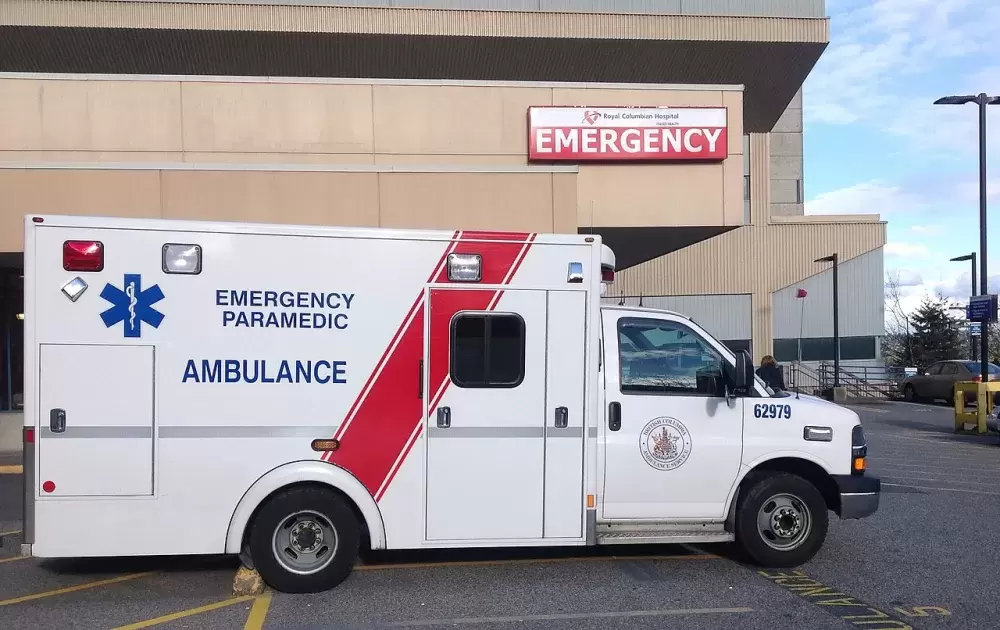The province is strengthening its ambulance system through its largest hiring push in B.C.’s history in rural and remote areas.
Health Minister Adrian Dix said 24 ambulance stations will move from on-call staffing to 24-7 service, with eight full-time paramedics in each location.
An additional 26 smaller stations will be getting more "permanent, regular paramedics” beginning Nov. 1.
Some of the communities listed to benefit from these improvements include: Lake Cowichan, Tofino, Tahsis and Zeballos, all of which Nuu-chah-nulth nations rely on.
"When we call 911 for help, British Columbians need to feel confident that help is on the way and that it will arrive quickly," Dix said in a release. "The significant progress made by BC Emergency Health Services over the summer will ensure a more effective ambulance service for patients and families who depend on it. Better support for paramedics and dispatchers will help them do the vital work we count on every day.”
Nuu-chah-nulth Tribal Council (NTC) Vice-President Mariah Charleson said she is happy to see “a push for essential services to reach our rural and remote communities.”
“People who live in these rural and remote communities often suffer in silence,” she said. “These are communities that are removed from services like the ambulance, services like the hospital, a dentist, a grocery store or a post office.”
Ehattesaht First Nation’s village of Ehatis is located next to Zeballos, which sits at the end of a 42-kilometre unpaved active logging road. Residents who require basic needs, such as hospital services or groceries, must travel to the nearest commercial centre in Port McNeill, which is 84 kilometres away, or Campbell River.
Ehattesaht First Nation Councillor Ernie Smith said that a lack of access to emergency services could mean the difference between life and death.
“If somebody has a heart attack or a stroke you can’t be waiting an hour and a half for an ambulance to come [from Port McNeill],” he said.
In May, Zeballos Mayor Julie Colborne expressed her concern about the “sustainability of BC Ambulance services in the Zeballos area” in a letter addressed to minister Dix.
When the BC Emergency Health Services (BCEHS) proposed a new paramedic staffing model in rural and remote communities called Scheduled On-Call, it raised alarm bells.
“I see this move as a catastrophic collapse of a service,” wrote Colborne.
Under the new model, Colborne said Zeballos would have one regular part-time paid paramedic, and the remaining hours would be covered by on-call paramedics that would receive a stipend of $2 per hour until their pager goes off. If on duty, they’d receive regular pay for a minimum of four hours.
The community had been previously operating under the “kilo guarantee” model, which provided on-call staff with a minimum of four hours pay regardless of whether they were called-out or not.
“This [shift] is concerning to a small community for several reasons, including availability of paramedics in community; issues with recruitment and retention, coverage for the area; and safety of our community, the area, its visitors, and workers,” Colborne wrote.
NTC echoed Colborne’s concern in a separate letter addressed to Dix in June.
“Changing [or] diminishing the current service model will undoubtedly have lasting effects and some of those could potentially be fatal,” it read. “The risks are too big.”
The province’s latest move to convert rural stations to full-time staffing is being called Alpha.
“We're happy to see that there has been a stronger push for understanding the risks that are associated with having that lack of access to essential services,” said Charleson.
According to the Ministry of Health, the hiring of the 85 new paramedics and 30 new dispatchers is currently underway.
"We are on track with filling new paramedic and dispatch positions, and I know this is going to create more stability in our staffing and improve our emergency medical response and our community paramedic services in rural and remote B.C. in particular," said Leanne Heppell, BCEHS interim chief ambulance officer, in a release.
Tla-o-qui-aht First Nation Emergency Preparedness Coordinator Elmer Frank said his nation is looking forward to seeing a growth in services.
“We know with our participation in our regional COVID-19 response teams that there's a high demand for ambulance services,” he said.
The provincial government developed the Rural, Remote, First Nations and Indigenous COVID-19 Response Framework in May to help ensure people living in remote Indigenous communities “have access to critical health care they can count on.”
Remote Nuu-chah-nulth nations were among the first in B.C. to receive the COVID-19 vaccine in January.
For Charleson, it stood as an example of Indigenous peoples’ needs being met.
As the winter season approaches and safety risks associated with traveling in-and-out of remote communities increases, Charleson said she’s relieved that change is coming.
“It’s something that we've been fighting for,” she said. “Ensuring that our rural and remote communities' needs are being met.”

